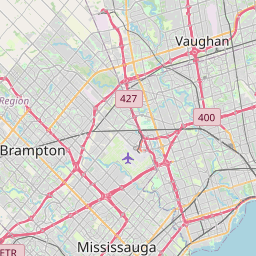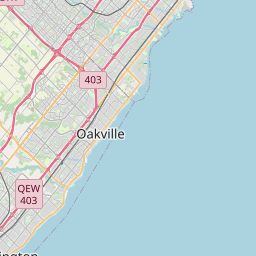Milestones:First External Cardiac Pacemaker, 1950
First External Cardiac Pacemaker, 1950
In 1950, in Room 64 of the Bantling Institute of the University of Toronto, Drs. Wilfred Bigelow and John Callaghan successfully paced the heart of a dog using an external electronic pacemaker-defibrillator having implanted electrodes. The device was developed by Dr. John Hopps at the National Research Council of Canada. This pioneering work led to the use of cardiac pacemakers in humans and helped establish the importance of electronic devices in medicine.
The plaque may be viewed at the front entrance of the C. H. Best Institute, 112 College Street, Toronto, Ontario, Canada.
According to a medical study published by Barber and Madden, up until 1945, the only successful operative cases of cardiac standstill had been treated with cardiac massage and intraventricular injection of adrenaline (33% of 143 such cases survived). Callaghan and Bigelow also report on the work of Hyman (1932) who used a cranked generator and needle inserted into the right auricular wall of guinea pigs to restart their stopped hearts. Also of note is that Sweet restarted to human hearts during operation by applying electrical current to the sino-auricular nodal region. Mark Lidwell from Australia reported at the Third Congress of the Australian Medical Society in 1929 the successful use of electrical stimulation with alternating current in 1928 to restart the heart of a child born in cardiac arrest.
Jack A. Hopps developed a simplified circuit and a portable model Pacemaker-Defibrilator which was used to continously stimulate stopped hearts to beat at a pre-set rate, or to induce spontaneous heart beating after which the heart continued to beat normally. These beats were inuced in dogs and rabbits through an inter-cardiac catheter electrode, rather than other approaches (e.g. needle electrodes) tried previously. This device was built in limited numbers commercially by Smith and Stone co., Ltd, Georgetown, Ontario, Canada.
Subsequent work by Zoll in 1951 (the PM-65 pacemaker) led to successful clinical use. In 1955, a patient with cardiac arrest was treated and had his heart pulse restored in Montreal using a Zoll device built by Electrodyne Company, Norwood, Massachusetts, U.S.A. In 1956, Aubrey Leatham and Geoffrey Davies developed an external stimulator with which to resuscitate patients with heart block.
The 1950 Toronto pacemaker demonstrated the engineering feasibility of using an external electronic cardiac pacemaker to force regular cardiac pacing, or induce spontaneous re-establishment cardiac pacing using an intercardiac electrode. This device was produced commercially.
The results were widely publicized and further developed by noted surgeons such as Dr. Walter Lillehei at the University of Minnesota and others. Dr. Lillehei worked closely with Earl E. Bakken and Palmer Hermundslie at Medtronic to develop the first wearable tranistorized pacemaker as well as advances in implanted electrodes, achievements which are commemorated in the IEEE Milestone for the wearable pacemaker.
References
[1] Bigelow, W.G., Callaghan J.C., Hopps, J.A.., General hypothermia for experimental intercardiac surgery; the use of electrophrenic respirations, an artificial pacemaker for cardiac standstill and radio-frequency rewarming in general hypothermia. Ann. Surg, Vol. 132, 1950: pp. 531-539.
[2] Callaghan, J.C., Bigelow, W.G., An Electrical Artificial Paceaker for Standstill of the Heart, Ann. Surg., Vol. 134, No.1, July, 1951; pp. 8-17.
[3] Bigelow, W.G., Callaghan, J.C., Hopps, J.A., General Hypothermia for Experimental Intracardiac Surgery, Ann. Surg., Vol. 132, No. 3 Sept., 1950; pp. 531-537.
[4] Wilfred Gordon Bigelow, Obituary, Birth and Death Notices, The Globe and Mail, Toronto, Ontario, Canada, Wednesday, March 30, 2005, p. S8 Column 1.
[5] John Carter Callaghan, “A Canadian king of hearts’, Obituaries, The Globe and Mail, Saturday, July, 24, 2004, p. F10.
[6] Thalen, H.J. Th., Van den Berg, J.W., Homan Van der Heide, J.N., Nieveen, J., The Artificial Cardiac Pacemaker, It’s History, Development and Clinical Application, RoyalVan Gorcum, Assen, The Netherlands, 1969.
[7] Ross, M.L., “New Surgery Repairs the Heart”, Saturday Night, January 4, 1958. Pp. 10-11, 35.
[8] Geddes, L.A., “Historical Highlights in Cardiac Pacing”, IEEE Engineering in Medicine and Biology, Vol. 9, Issue 2, June 1990, pp. 12-18.
[9] Furman, S., Early History of Cardiac Pacing and Defibrillation, Indian Pacing Electrophysiology Journal, 2 9 (1): pp. 2-3.
[10] Bigelow, W.G., Cold hearts, McLelland and Stewart Ltd, Toronto, 1984. (Chapter 4)
[11] Mittal, T., Pacemakers – A journey through the years, Indian Journal Thoracic and Cardiovascular Surgery, Vol. 21, 2005, pp. 236-249.
[12] Sweet, Wh.H., Stimulation of Sino-atrial Node for Cardiac Arrest During Operation, Bull. Am. College Surg., 32: 234, 1947.
[13] Aquilina O. A brief history of cardiac pacing. Images Paediatric Cardiology, 2006; Vol. 27; pp. 17-81.
[14] Kaye, M., Schickler, O., Rosenfeld, I., Lapin, A.W., Successful Treatment of Ventricular Arrest During Complete Heart Block by External Electrical Stimulation, Ann. Heart J., Vol. 51, No. 3, March 1956, pp. 460-463.
[15] Furman, S., Early History of Cardiac Pacing and Electrophysiology Journal, Vol. 2, No. 1, 2002; pp. 2-3.
Map












